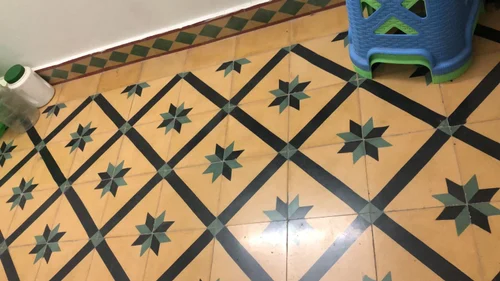Incorporating Moroccan tiles into a modern kitchen design is a creative way to blend the rich cultural heritage of Moroccan craftsmanship with contemporary aesthetics. Known for their vibrant colors, intricate patterns, and artistic flair, Moroccan tiles can transform an ordinary kitchen into a stunning and stylish space. This article explores the benefits, design possibilities, and practical considerations of using Moroccan tiles in a modern kitchen.
The Appeal of Moroccan Tiles
Rich Cultural Heritage
Moroccan tiles, also known as Zellige tiles, are handcrafted using traditional techniques passed down through generations. Each tile is unique, reflecting the artistry and skill of the craftsmen. This rich cultural heritage adds a sense of history and authenticity to the kitchen, making it a conversation piece.
Vibrant Colors and Patterns
Moroccan tiles are renowned for their vibrant colors and intricate patterns. The bold use of blues, greens, yellows, and reds, along with geometric and floral designs, can infuse the kitchen with energy and personality. These tiles can serve as a focal point, adding visual interest and depth to the space.
Applications in the Modern Kitchen
Backsplashes
The backsplash is an ideal area to showcase Moroccan tiles. The tiles can create a stunning visual impact, transforming the area behind the stove or sink into a work of art. Whether you opt for a full backsplash or a feature strip, Moroccan tiles can add a touch of exotic elegance to the kitchen.
- Geometric Patterns: Use tiles with geometric patterns to create a contemporary yet culturally rich backsplash. These patterns can add a modern touch while retaining the traditional essence of Moroccan design.
- Bold Colors: Incorporate tiles with bold, vibrant colors to make the backsplash a focal point. The juxtaposition of modern kitchen fixtures with colorful Moroccan tiles can create a striking and harmonious balance.
Flooring
Moroccan tiles can also be used on the kitchen floor to add a unique and stylish touch. The durability and slip-resistant properties of these tiles make them suitable for high-traffic areas like the kitchen.
- Pattern Play: Use a mix of patterns to create an eclectic and lively floor design. This approach works well in larger kitchens where the intricate designs can be fully appreciated.
- Subtle Elegance: For a more subdued look, choose tiles with a monochromatic color scheme or simpler patterns. This can add a touch of elegance without overwhelming the space.
Countertops and Islands
Using Moroccan tiles on countertops or kitchen islands can create a cohesive and visually appealing design. The tiles can be used to cover the entire surface or as an accent along the edges.
- Accent Borders: Use Moroccan tiles as an accent border along the edges of countertops or islands. This adds a subtle touch of color and pattern without dominating the overall design.
- Full Coverage: For a bolder statement, cover the entire countertop or island with Moroccan tiles. This creates a seamless and eye-catching surface that stands out.



